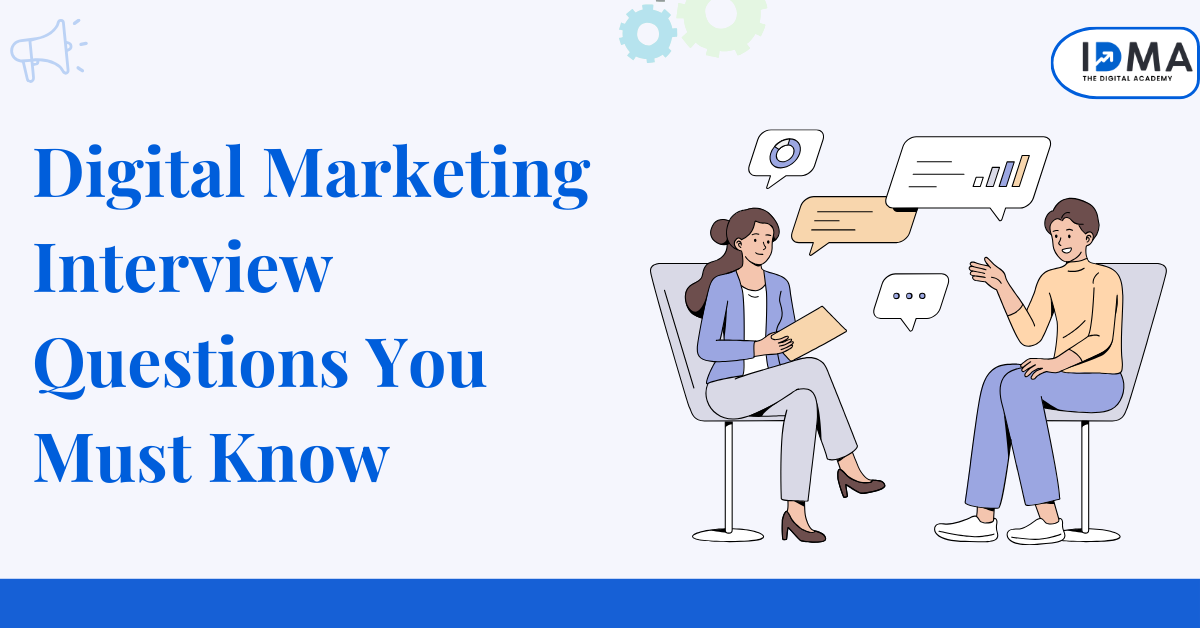Get the Complete insights on the question “is digital marketing growing?” in the below Article
The digital marketing industry is experiencing significant growth due to several driving forces that are reshaping the way brands reach and engage with their audiences. With the digitisation of everyday life, companies across the globe, including India, are recognising the necessity of digital marketing as an indispensable promotional tool. This importance is reflected in the increased digital marketing expenditure within India, highlighting a clear shift towards leveraging online platforms to connect with consumers.
Another factor contributing to the expansion of digital marketing is the customer’s preference for virtual interactions, which has been further accelerated by the pandemic. As traditional marketing channels face limitations in the new norm, digital mediums offer versatile and measurable ways for marketers to target specific demographics and track campaign performance. Additionally, trends such as personalised marketing have become more prominent, enabling brands to craft more individualised experiences that resonate with users, thus fostering growth in the digital marketing sphere.
Technological advancements, such as artificial intelligence and data analytics, are equipping professionals within the industry with sophisticated tools to understand and predict customer behaviour patterns. Embracing these technologies allows for enhanced decision-making and strategy optimisation, resulting in more effective campaigns and higher returns on investment. Consequently, this constant evolution in technology continues to create new opportunities and channels for digital marketing, ensuring its growth trajectory remains upward.
Evolution of Digital Marketing

The landscape of digital marketing has undergone a significant transformation with the advent of new platforms and technologies. This section delves into the pivotal changes that have reshaped the way businesses cultivate their online presence and connect with audiences.
Rise of Social Media
Since the early 2000s, social media platforms like Facebook and Instagram have revolutionised the marketing industry. The ability to target vast numbers of internet users based on their interests and behaviours has become a cornerstone of online marketing. Businesses recognise that platforms such as TikTok now play a crucial role in their marketing strategies, leveraging influencer marketing and tailored content to engage with younger demographics and drive sales effectively.
Impact of AI and AR
The integration of artificial intelligence (AI) and augmented reality (AR) in digital channels has significantly enhanced personalisation and user experience. AI now powers sophisticated tools for search engine optimisation (SEO), predicting consumer behaviour, and automating customer service. AR, on the other hand, provides immersive experiences that can lead to higher engagement and ROI, as seen with interactive ads on platforms like Google.
Shift from Traditional to Digital
The shift from traditional to digital marketing was accelerated by the pandemic, as more consumers moved online, driving businesses to follow suit. This shift has been quantified by McKinsey, revealing that digital interactions are now 30% more common in B2B sales than pre-pandemic levels. SEO and Google Ads have become essential in capturing this surge of online users, turning Google not only into a powerful search engine but also a vital digital marketing hub. The emphasis now is on targeted, efficient strategies that reliably measure and optimise ROI across all digital marketing efforts.
Why Digital Marketing Is Gaining Popularity

The digital marketing landscape is experiencing rapid growth due to the rise in internet users and the shift in consumer behaviour towards online mediums for both information and purchases. This trend is particularly evident in the increased use of mobile phones for internet access and the booming e-commerce sector, directly influencing social media marketing and online marketing strategies.
Increasing Internet Penetration
The number of internet users globally has soared, with a significant portion accessing the internet via mobile phones. This has created new avenues for businesses to connect with potential customers. In India, internet usage rates have been rising consistently, reflecting a global trend that sees continual growth in digital connectivity every year. As such, businesses are investing more in online marketing to tap into the vast audience that now relies on digital channels for numerous aspects of their daily lives.
Changing Consumer Behaviour
Consumer behaviour has evolved, with shoppers increasingly turning to online platforms to conduct research, compare products, and make purchases. E-commerce sales have been witnessing a steady increase, affirming that consumers are becoming more comfortable with shopping online. Furthermore, the integration of social media marketing into the e-commerce experience has made it easier for consumers to discover new products and brands through platforms they regularly use. Brands that understand and leverage these behavioural shifts can effectively engage their target audience, leading to significant growth in their digital marketing efforts.
Strategies for Growth in Digital Marketing

In the dynamic realm of digital marketing, certain tactics have emerged as cornerstones for growth. By harnessing the power of content, personalising email communication, and embracing the ubiquity of video and mobile platforms, businesses can aim to significantly enhance their reach and conversion rates.
Content Marketing and SEO
Content marketing, when fused with effective search engine optimisation (SEO), forms a powerful duo that drives organic growth. They should invest in high-quality, engaging content that resonates with their audience, incorporating long-tail keywords to capitalise on niche searches. Such strategic content can improve their visibility in search results and bolster their ROI.
Email Marketing for Retention
Email marketing remains a stalwart for customer retention. Companies maximising this channel personalise their messaging to create meaningful connections, effectively segmenting their audience to deliver targeted information. This fosters loyalty and encourages repeat business, thereby enhancing the conversion rate.
Leveraging Video and Mobile
With the surge in video marketing, companies are creating captivating video content to engage users, knowing that such media can lead to higher conversion rates. Mobile marketing is also critical; they should ensure their content is mobile-friendly, considering the growing adoption of voice search and the increasing use of mobile devices for internet access.
Measuring Success in Digital Marketing

Successfully navigating the digital marketing landscape hinges on an in-depth understanding of various metrics and analytics, alongside mastering the art of conversion rate optimisation. This section ventures into these vital components, analysing the roles they play in shaping effective strategies.
Understanding Metrics and Analytics
In the realm of digital marketing, metrics and analytics are pivotal in illuminating the efficacy of campaigns. They serve as quantifiable evidence of performance, covering a broad spectrum of variables from website traffic to engagement rates. By scrutinising these figures, one can gauge returns on investment (ROI) with precision and adjust tactics to bolster outcomes. Notably, these tools offer insights by tracking user behaviour on the internet, opening a window to their preferences and the content’s relative success.
Metrics, such as click-through rates and time spent on page, are crucial in evaluating how content resonates with the audience. Regular analysis aids in pinpointing trends and preemptively identifying potential lulls in engagement. Similarly, by measuring search engine results page (SERP) rankings and organic traffic, one can assess the reach and discoverability of their digital presence.
Conversion Rate Optimisation
The cornerstone of digital marketing success lies in conversion rate optimisation (CRO), which is predicated on converting website traffic into actionable outcomes, whether that be sales, subscriptions, or enquiries. CRO necessitates a multifaceted approach to refine user experience and streamline the pathway to conversion.
Achieving an optimal conversion rate involves A/B testing, user feedback, and detailed examination of user interactions with the website. It’s a cycle of testing, learning, and enhancing. For instance, A/B testing might reveal that a more prominently positioned call-to-action (CTA) button significantly improves conversion rates.
Conversions themselves are varied, and understanding the specific actions that align with business goals is crucial. Whether it’s a purchase confirmation, a downloaded piece of content, or a filled-out contact form, these actions are the tangible results of effective digital marketing strategies and reflect the alignment of the campaign with audience needs.
Challenges and Competing in the Digital Space

Digital marketing is a highly competitive field that requires businesses to overcome market saturation and stay ahead of their competitors. Navigating this landscape involves a deep understanding of marketing strategies and a clear identification of the target audience.
Overcoming Market Saturation
Market saturation is a significant hurdle for businesses, as new and established companies jostle for visibility in a crowded online space. Retail and small businesses often find themselves struggling to be noticed amidst numerous competitors. To counteract this, companies are developing more innovative marketing solutions that set them apart. They seek out less congested marketing channels or niche markets and place a greater emphasis on distinct branding and customer relationships to foster loyalty.
Staying Ahead of Competitors
Staying ahead of competitors necessitates a keen eye on marketing strategy and advertising efforts. Businesses must not only be aware of what their competitors are doing but also anticipate changes in consumer behaviour and adapt swiftly. Utilising a variety of marketing channels, including search engines and social media platforms, allows for a diverse approach to reach the intended target audience. Additionally, leveraging data analytics ensures that strategies are responsive and that companies remain one step ahead in the digital marketing race.
The Role of Social Media in Digital Marketing
Social media’s integral role in digital marketing is evidenced by its capacity for enhancing brand awareness and elevating customer experience. It serves as a pivotal channel for content marketers to effectively broadcast brand messaging and interact with audiences.
Building Brand Awareness
Social media platforms are instrumental in augmenting a brand’s visibility. They allow content marketers to craft and disseminate captivating adverts that resonate with a broad audience. A consistent presence on social media pages fosters recognition, empowering brands to secure a firm position within their market niche.
Engagement and Customer Experience
Providing a stellar customer experience via social media channels is paramount. It revolves around crafting meaningful interactions and prompt responses to inquiries and feedback.
Monitor comments and messages for swift replies Curate content that invites participation By focusing on engagement, businesses not only support their customer service efforts but also gain invaluable insights into consumer preferences and behaviour. Proactive social media engagement strategies, such as polls, live videos, and Q&A sessions, foster a sense of community and belonging, further solidifying customer relationships.
Future Trends and Predictions
In the evolving landscape of digital marketing, two significant areas stand out as pivotal for the future: personalisation and the embrace of new technologies. These elements are anticipated to substantially shape the strategies and tools used in the coming years.
Personalisation and User Experience
As digital marketing grows more sophisticated, personalisation is emerging as a key trend, transforming how businesses interact with consumers. Leveraging big data and advanced analytics allows for crafting highly tailored marketing messages, aligning with individual user preferences and behaviours. This trend is not only improving user engagement but also driving higher conversion rates by delivering relevant content at the right time.
Embracing New Technologies
The integration of new technologies, such as artificial intelligence (AI) and augmented reality (AR), is revolutionising the digital marketing landscape. AI enables predictive analytics, chatbots for customer service, and personalised recommendations, making marketing efforts more efficient and effective. AR, on the other hand, offers immersive experiences, allowing consumers to interact with products in innovative ways before making a purchase.
In conclusion, the question “is digital marketing growing?” has a clear and affirmative answer. The industry is experiencing robust growth, driven by advancements in technology, changing consumer behaviour, and the increasing importance of online platforms. For businesses and marketers, staying ahead of these trends and leveraging new tools will be crucial in capitalising on the expanding opportunities within the digital marketing realm. At the Indian Digital Marketing Academy (IDMA), we are committed to providing the knowledge and skills necessary to navigate and thrive in this dynamic field.







